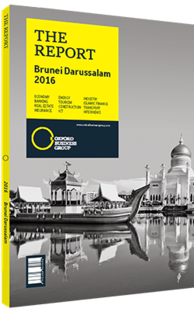Government efforts to reduce car dependency in Brunei Darussalam
As private car ownership proliferates in the Brunei Darussalam, its streets and highways are becoming increasingly congested, and road-related injuries and fatalities are a growing trend. The Sultanate’s reliance on the automobile has been blamed on a lack of public transport, attractive deals and loan options on vehicle purchases, and low petrol prices – as of April 2016, one litre of petrol cost $0.39.
Government officials have been prompted to address these issues by estimates suggesting that the number of vehicles could surpass the number of citizens if policies are not implemented to discourage disproportionate levels of car ownership. According to data from the Department of Economic Planning and Development, private car ownership in Brunei Darussalam increased by 19% between 2011 and 2014, while its population grew by 4% in the same period, as per World Bank figures.
CAR COUNTRY: Brunei Darussalam continues to “exhibit extremely high levels of car ownership, use and dependency”, according to the Ministry of Communication’s Land Transport Master Plan 2014 (LTMP). The document puts the total number of vehicles registered in the country at 148,000, which equates to one vehicle being registered for every 2.8 Bruneians. The master plan also recognises the need to expand on the limited range of public transport options available to the population, while an absence of rail services and limited taxi numbers put a strain on the public bus networks. Local bus services can only be found in the district of Brunei-Muara and the towns of Kuala Belait and Seria, while inter-district bus services link Bandar Seri Begawan to the city of Kuala Belait and the towns of Seria and Lamunin.
The ASEAN Strategic Transport Action Plan 2011-2015, also known as the Brunei Action Plan (BAP), aimed to increase public transport options within the region. One of BAP’s key recommendations was for ASEAN member countries to study the feasibility of setting up bus rapid transit (BRT) systems as opposed to rail systems.
A focus on buses has also been a prerogative of the LTMP, which aims to reduce the country’s dependency on private automobiles and its road fatality rate by improving traffic conditions and tightening transport regulations. As well as reducing the number of cars on the road, officials are determined to reduce road fatality rates by 35% before 2020, in line with the UN’s “Decade of Action for Road Safety 2011-20”. The LTMP aims to achieve this by curtailing “excess speed and improving driving standards and driver behaviour”.
CATCH A BUS: Based on the findings of the Centre for Strategic and Policy Studies (CSPS) in 2014, a BRT project was eventually chosen over a mass rapid transit or a light rail transit system, both of which had been considered as feasible upgrades to the public transport system. Having scrutinised economic, environmental and social factors, CSPS consultants determined that the public would be better served by a BRT network, particularly in light of the Sultanate’s low population density.
Under government plans, the current bus network will be expanded to create a feeder system to support the new sections of the BRT system, which itself will be made up of four bus lines. The total network is expected to span 48 km of bus lanes across the Brunei-Muara district. Approximately 126 BRT buses will make 29,000 trips during peak morning hours and 228,000 journeys per day. The first line is scheduled to open in 2020, while completion of the network is expected by 2035. Two new bus terminals – a proposed central station near the international airport and Muara Bus Terminal – will allow for easy connections to the BRT, and three park-and-ride facilities in the pipeline should encourage public uptake of the service.
You have reached the limit of premium articles you can view for free.
Choose from the options below to purchase print or digital editions of our Reports. You can also purchase a website subscription giving you unlimited access to all of our Reports online for 12 months.
If you have already purchased this Report or have a website subscription, please login to continue.

